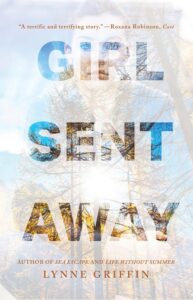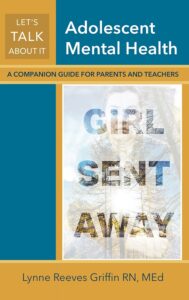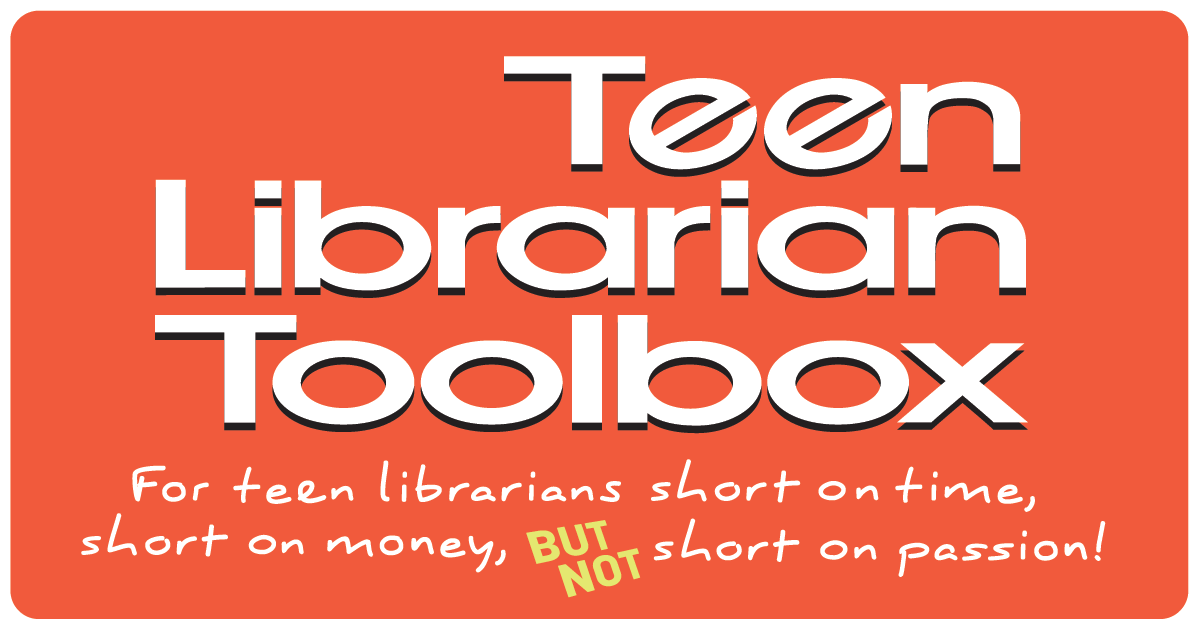Crossover Fiction Gets Parents and Teens Talking, a guest post by Lynne Griffin
 Decades of research show that when parents and teachers partner together around social-emotional learning, teens are better positioned to reach their greatest potential as healthy, active members of the community. There’s simply no doubt that this kind of involvement is directly linked to teens having higher self-confidence and more positive attitudes toward school and home. From better attendance, higher grades, and higher graduation rates, to increases in prosocial behavior and decreases in problem behaviors, the most consistent predictor of high academic achievement and positive social adjustment for teens is engaged parents and teachers.
Decades of research show that when parents and teachers partner together around social-emotional learning, teens are better positioned to reach their greatest potential as healthy, active members of the community. There’s simply no doubt that this kind of involvement is directly linked to teens having higher self-confidence and more positive attitudes toward school and home. From better attendance, higher grades, and higher graduation rates, to increases in prosocial behavior and decreases in problem behaviors, the most consistent predictor of high academic achievement and positive social adjustment for teens is engaged parents and teachers.
Numerous studies also confirm what every reader already knows—that the novel is an incomparable vehicle for the exploration of human social and emotional life. Literary critics and philosophers have long advanced the notion that one of fiction’s main jobs is to raise social consciousness.
ADVERTISEMENT
ADVERTISEMENT
The Power of Fiction to Teach
When teachers, parents and teens come together to deepen their understanding of our collective emotional lives—using fiction—they positively impact the development of the core competencies of social-emotional development, which include nurturing self and social awareness, developing relationship skills, and influencing responsible decision-making.
Despite biological predispositions to conditions like anxiety or depression, it is resiliency skills that help protect teens from various mental health conditions. And if you or someone you care about has an existing mental health condition, then building resilience is crucial to improving one’s ability to cope.
Using a conversation-based approach to discuss fiction, teens are afforded a safe space to learn about preventive mental health and capitalize on personal strengths for building resilience and navigating complex social relationships.
Crossover Fiction Gets Parents and Teens Talking
Some within publishing deem a novel “crossover” when it is written for young adults but attracts a healthy adult audience. Others—mostly in the fields of public relations and marketing—consider a novel “crossover” when it is written for adults but young adults read and spread the word about it. Regardless of which direction interest first flows, crossover fiction serves a powerful purpose, which is to get parents and teens reading and talking about meaningful text together.
Participation in conversations using high interest fiction, allows parents, teachers, and teens to:
- discuss risk and protective factors for mental illness
- develop resiliency skills that promote emotional well-being
- demonstrate perspective-taking and conflict management skills
- express empathy toward others
- practice interpersonal communication skills
Your Book Discussion Group
 Due to the sensitive nature of the types of books that can have the greatest impact on raising social awareness and reducing stigma, it’s important to prepare the environment, making it conducive to sharing and learning. Thoughtful, respectful conversation is more likely to occur if teachers and parents create emotional safety zones in advance of book discussions.
Due to the sensitive nature of the types of books that can have the greatest impact on raising social awareness and reducing stigma, it’s important to prepare the environment, making it conducive to sharing and learning. Thoughtful, respectful conversation is more likely to occur if teachers and parents create emotional safety zones in advance of book discussions.
- Create ground rules and goals, either by utilizing a planning committee or taking the first few minutes of each meeting to agree on participation expectations.
- Consider coaching teens to co-lead the discussion with agreed upon ground rules and partnerships with parents and/or teachers.
- At every meeting, ensure confidentiality and find ways to establish a sense of closeness among teens, teachers, and parents by aligning interests.
- Choose books wisely by outlining group goals in advance and then selecting titles that support certain kinds of discussions.
- Keep discussions focused on characters and their wants, needs, and choices. Revisit ground rules if conversations become too personal.
- Extend the learning beyond the group by identifying activities that parents, teachers, and teens can engage in to keep conversations going.
The best fiction illuminates the human condition and gives readers much to reflect on and discuss. By harnessing the power of storytelling—informed by research on social-emotional learning and effective communication—teachers, parents, teens can engage in conversations about mental health and emotional well-being, with the goal of building empathy, nurturing perspective-taking, and strengthening resilience.
Titles to Consider:
Stories written for teens with crossover to adults:
Eleanor and Park by Rainbow Rowell (Friendship, Diversity)
The Shock of the Fall by Nathan Filer (Mental illness, grief)
The Thing About Jellyfish by Ali Benjamin (Loss, loyalty)
Stories written for adults with crossover appeal to young adults:
Super Sad True Love Story by Gary Shteyngart (Technology, Relationships)
Disgruntled by Asali Solomon (Belonging, Diversity)
Once Upon a River Bonnie Campbell (Independence, courage)
Meet Lynne Griffin
 Lynne Reeves Griffin RN, MEd is the author of the family-focused novels Girl Sent Away, Sea Escape and Life Without Summer, and the nonfiction guides, Let’s Talk About It—Adolescent Mental Health and Negotiation Generation. Kirkus Reviews says about Girl Sent Away, “With its young heroine and sensitive examination of adolescents in crisis, [Girl Sent Away] would do well to also find a teen audience.”
Lynne Reeves Griffin RN, MEd is the author of the family-focused novels Girl Sent Away, Sea Escape and Life Without Summer, and the nonfiction guides, Let’s Talk About It—Adolescent Mental Health and Negotiation Generation. Kirkus Reviews says about Girl Sent Away, “With its young heroine and sensitive examination of adolescents in crisis, [Girl Sent Away] would do well to also find a teen audience.”
Follow Lynne at her website LynneGriffin.com and on twitter @Lynne_Griffin.
Filed under: Guest Post
About Amanda MacGregor
Amanda MacGregor works in an elementary library, loves dogs, and can be found on Twitter @CiteSomething.
ADVERTISEMENT
ADVERTISEMENT
SLJ Blog Network
2024 Books from Pura Belpré Winners
In Memorium: The Great Étienne Delessert Passes Away
Winnie-The-Pooh | Review
Parsing Religion in Public Schools
ADVERTISEMENT







